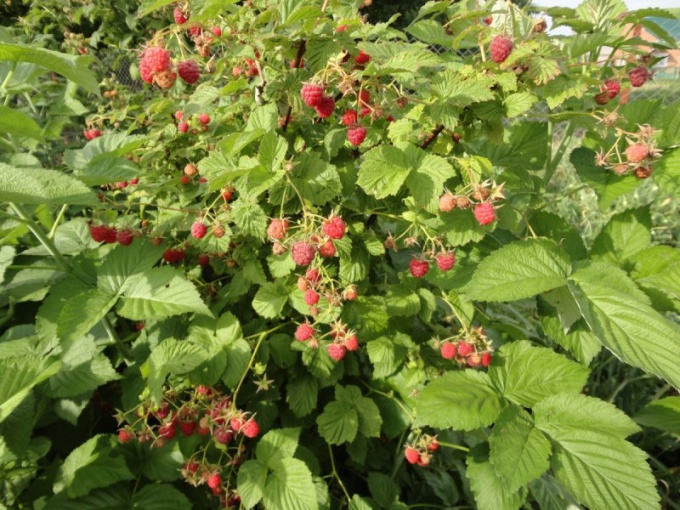Fit raspberry
Raspberries, it is preferable to plant in the fall. The best results are obtained at earlier times in the first half of September. But well acclimatized and plants are planted during the Oct. If for any reason, fall planting was not successful, then raspberries can be planted early in the spring before Bud break.
Before planting bushes conduct preplant soil preparation. The longevity of the Bush, its development and fruition depends on the quality of the work performed. It is necessary to destroy the weeds, enrich the soil with moisture and nutrients. The soil dug to a depth of 30-40 cm Cuts roots before planting, upgrading and dip in the ground talker. Raspberries are planted in prepared channels with a width of 40-50 cm and a depth of 50-60 cm.
The aboveground part of seedlings are pruned to 30 cm Placing of seedlings depends on the quality of soil, but mostly bushes are planted at a distance of 0.5 m between the rows, leave up to 2 m. After planting, the plants watered, and the soil in the rows is mulched. This improves the penetration of moisture and contribute to the fact that in hot weather the soil is not overheated. Of the mulching materials used moist peat litter, tortonesi, humus and chopped straw. In the autumn planting the Bush is usually enough for one watering, and if the spring requires re-watering.
When planting currant pits should be prepared in advance so the soil has time to settle. Raspberry does not require early preparation of planting holes.
Planting currant
The currants are planted on the lower, boggy areas with shallow waters at a depth of 1.5 m. It tolerates shade. As the bushes begin to grow in early spring, the best time for planting is the end of October - beginning of November. However, some gardeners carry out planting and in the spring, at the earliest time, and even in the February "window".
Currant - one of the most valuable crops. The berries of currant contains vitamin C, provitamin a, vitamins b, P, PP, organic acids and mineral substances.
The currants are planted at a distance of 1.5 m between plants and 2 m between rows. The area where you intend planting of seedlings need to fertilize at the rate of 2 kg compost, 100 g of superphosphate and 150 g of ash per 1 sq. m. avoid contact with chlorinated potash in this mixture, as chlorine is detrimental for crops.
The depth of the planting hole should be at least 50-60 cm of the Bottom of the pit loosen, then pour into it the fertilizer thoroughly mixed with the loosened soil. Then poured about 10 cm of earth and planted the Bush. You then need to water and mulch the soil. After planting, the sapling should be cut, leaving only a few major kidneys. It contributes to the development of a strong root system.
